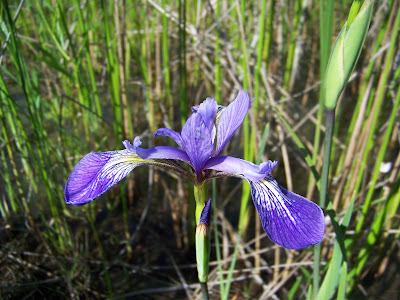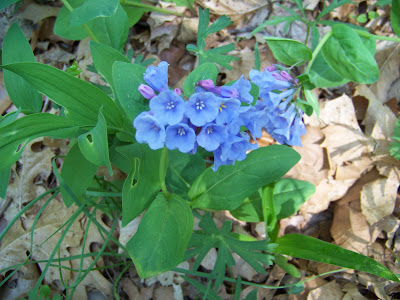 Photo by John Pogacnik, cropped by me.
Photo by John Pogacnik, cropped by me."You know,
Harry Potter's Owl," was how I described the bird to one of my friends. That is usually the easiest way I have found to describe a Snowy Owl to someone who is not a birder. A lot of people have seen the Harry Potter movies and know exactly what I am talking about when I say "Harry Potter's Owl".
And I saw one, in all its niveous beauty, this past weekend. (How's that for a thesarus word? :) )
A few of my friends and I went on a Cleveland pelagic trip on Lake Erie. We went out on the lake, looking for birds, hoping for jaegers and such. Someone spotted this snowy owl along one of the breakwalls, near the airport. The boat came fairly close, and my friend, John Pogacnik, shot a few pics of the gorgeous beast. This is a juvenile owl. One can tell a juvenile owl from an adult by all the dark barring on its feathers. An older owl will not have as much.
The one feature I love best about snowy owls? Their eyes. Those deep, piercing amber eyes.

They are such stunning birds, with an almost ghost-like appearance as they float silently along the horizon. To see one also makes me sad. Most Snowy Owls that visit Indiana and Ohio in the winter, do not make it. Many times these owls get hit by cars and trucks as they are gliding across the highway, looking for a meal. Snowy Owls glide very low along the ground, as they search for food, and this puts them right in the path of a vehicle.
So why do Snowy Owls come to Indiana in the wintertime, you may ask? There normal range is in the arctic tundra, throughout Canada and the Northern United States. To be in Indiana is not a common occurrence. This year we have had quite a few reports of Snowy Owls. Brad Bumgardner has created a map with a lot of the Snowy Owl sightings. One was recently seen on Sunday along I-70, near Richmond. Today, the Indiana Bird listserv reports one in Allen County near US 30. The answer is they are looking for food. Snowy Owls love to snack on lemmings.
Lemmings are cyclic in nature. Lemming populations will increase year after year and the predators, such as owls and fox will increase along with them. Eventually, they will hit a threshold and the predators will apply too much pressure on the lemming population. The lemming population will crash and the abundant predators will be forced to look for food elsewhere. The Snowy Owl will fly southward looking for other food. These cycles seem to occur about every four years.
It has been reported that a combination of a good breeding season, producing many juvenile owls, and a possible crash in the lemming population up north may force many Snowy Owls to the south. Snowy Owls, especially juveniles, should be viewed fairly often this winter. Keep your eye out when you are near an open field this season. You may be lucky enough to encounter one of these beautiful winter visitors.



 Monarch Ovipositing in April
Monarch Ovipositing in April Green Salamander
Green Salamander Hummingbird Moth on Common Milkweed
Hummingbird Moth on Common Milkweed Spider and Wasp interaction. Photo By Jim McCormac.
Spider and Wasp interaction. Photo By Jim McCormac. Wheel Bug on False Sunflower
Wheel Bug on False Sunflower  Black Widow
Black Widow Harvester Butterfly on Horse Dung
Harvester Butterfly on Horse Dung Fishing Spider
Fishing Spider Crested Coral Root Orchid
Crested Coral Root Orchid
 Pink Lady Slipper Orchid
Pink Lady Slipper Orchid Devil's Urn Fungus with Tiny Spiders Inside
Devil's Urn Fungus with Tiny Spiders Inside Doe near Side of Road at Eagle Creek
Doe near Side of Road at Eagle Creek

 My sister, Joyce, and I were headed across State Route 741 near Lebanon, OH around 4:30 pm today and witnessed the most amazing sight. We noticed the clouds near the sun were lit up with color, blending from rich orange to yellow to a pale green and a hint of purple. It looked like a short rainbow, but it was not raining. We found out later that this strange atmospheric anomaly is called a parhelion or, the word I prefer, sundog.
My sister, Joyce, and I were headed across State Route 741 near Lebanon, OH around 4:30 pm today and witnessed the most amazing sight. We noticed the clouds near the sun were lit up with color, blending from rich orange to yellow to a pale green and a hint of purple. It looked like a short rainbow, but it was not raining. We found out later that this strange atmospheric anomaly is called a parhelion or, the word I prefer, sundog.
 I was so glad to share this unexpected and beautiful event with my sister on Christmas Day!
I was so glad to share this unexpected and beautiful event with my sister on Christmas Day!
 This is a photo my friend
This is a photo my friend 
















